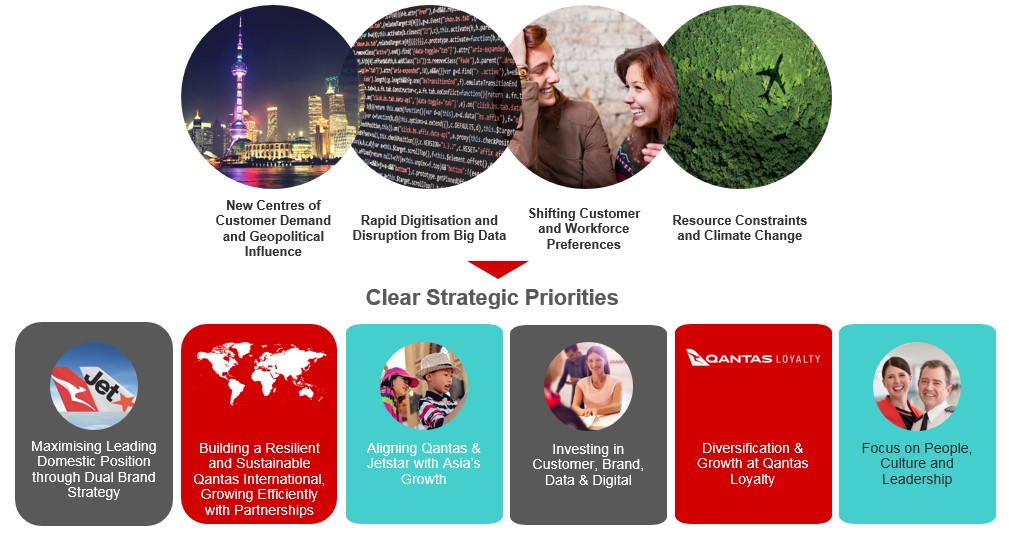Our strategy is to build the Qantas Group’s competitive advantages and create long-term shareholder value by maximising the strength of our integrated portfolio of businesses and brands.
The breadth of the Group model – with Qantas, Jetstar and Qantas Loyalty – allows us to serve the widest range of customers, gives us greater resilience to external volatility, and enables us to pursue growth opportunities in a range of markets. Our dual brand strategy in domestic Australia is designed to segment and grow the market, maximising Group outcomes.
While we continue to focus on growing earnings from our core domestic and international operations, the Group is also pursuing growth through our investments in Jetstar-branded airlines in Asia and by leveraging our deep customer insights and brand strength for disruptive growth at Qantas Loyalty.
We are focused on driving a permanent shift in our cost base and competitive position across the Group through transformation.
The three-year Qantas Transformation program, launched in December 2013, accelerated our existing change agenda. Our goal was not just to navigate tough short-term conditions, but to permanently increase Qantas’ productivity and competitiveness and embed a culture of transformation across the business. The Transformation program delivered $3 billion of benefits across Financial Year 2015 to Financial Year 2019.
Qantas’ 100th year has turned out to be the most challenging in its history. In response to the COVID-19 crisis and its impact on global aviation, we have developed a three year plan to guide the Qantas Group through the COVID-19 crisis and create a stronger platform for future profitability, long-term shareholder value and to preserve as many jobs as possible.
The Recovery plan, announced in June 2020, is focused on three immediate actions:
- Recapitalise through a $1.4 billion equity raising to strengthen our financial resilience.
- Right size our workforce, fleet and other costs according to demand projections, with the ability to scale up as flying returns.
- Restructure to deliver ongoing cost savings and efficiencies across our operations.
The plan targets benefits of $15 billion over three years, in line with reduced flying activity including fuel consumption savings, and delivering $1 billion per annum in ongoing cost savings from FY23 through productivity improvements across the Group.
Ultimately, the three-year recovery plan will create a stronger platform for future profitability, generate long-term shareholder value and preserve as many jobs as possible in the long-term. The recovery plan will ensure the Qantas Group is well-positioned to capitalise on new opportunities and continue its role as the national carrier in supporting tourism, connecting regional communities and safely flying millions of people every year.
The Group’s long-term target is to deliver Return on Invested Capital (ROIC) greater than our cost of capital through the cycle. To ensure this, we target average ROIC through the cycle of greater than 10 per cent.

Safety is always our first priority Image



